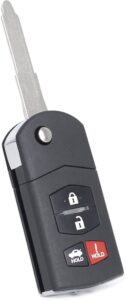Looking to power a light bulb using just a battery? Well, you’ve come to the right place! In this article, we’ll show you exactly how to run a light bulb off a battery. No need to be an electrical guru or possess any fancy equipment – we’re going to break it down into simple steps that anyone can follow. So, if you’ve ever wondered how it’s done or if it’s even possible, get ready to learn the fascinating process of lighting up a bulb with just a battery. Let’s dive in!
How To Run A Light Bulb Off A Battery
Running a light bulb off a battery can be a useful skill in various situations, such as power outages, camping trips, or simply when you need portable lighting. Whether you’re a beginner or an experienced DIY enthusiast, this guide will walk you through the process of running a light bulb off a battery. We’ll cover the necessary materials, safety precautions, and step-by-step instructions to help you successfully power a light bulb using a battery.
Materials You’ll Need
Before we begin, let’s gather all the materials necessary to run a light bulb off a battery. Here’s what you’ll need:
1. Light bulb: Choose an appropriate light bulb based on your needs. Consider factors such as brightness, power consumption, and socket compatibility. LED bulbs are a popular choice due to their energy efficiency.
2. Battery: Select a battery that can provide enough power to illuminate the light bulb. Common choices include AA, AAA, C, or D batteries. Check the voltage and capacity rating of the battery to ensure it meets the requirements of your light bulb.
3. Battery holder or connector: You’ll need a battery holder or connector to connect the battery to the light bulb. This ensures a secure and reliable connection throughout the operation.
4. Wire: Use insulated wire to connect the battery holder or connector to the light bulb. The wire should be long enough to bridge the distance between the battery and the light bulb.
5. Electrical tape: Electrical tape is essential for securing connections and insulating exposed wires. It helps prevent short circuits and ensures safety during the operation.
6. Multimeter (optional): A multimeter can be handy for measuring voltage, current, or resistance during the setup. It allows you to monitor the electrical parameters and ensure everything is functioning correctly.
Safety Precautions
While working with electricity, it’s vital to prioritize safety. Follow these precautions to minimize any potential risks:
1. Disconnect the battery: Before starting any connections, ensure the battery is disconnected to avoid accidental shock or short circuits.
2. Check voltage compatibility: Verify that the voltage rating of the light bulb matches the rated output voltage of the battery. Mismatched voltages can damage the bulb or pose a safety hazard.
3. Proper insulation: Insulate all connections using electrical tape to prevent any exposed wires or contacts. This reduces the risk of electric shocks or short circuits.
4. Handle batteries properly: Always handle batteries with care and follow the manufacturer’s instructions. Keep them away from heat sources, water, or other potentially hazardous conditions.
5. Ventilation: If using rechargeable batteries, ensure adequate ventilation to prevent overheating. Avoid covering the battery or operating in confined spaces.
Step-by-Step Instructions
Now that we have the necessary materials and safety precautions in mind, let’s dive into the step-by-step process of running a light bulb off a battery.
1. Prepare the battery holder: If using a battery holder, insert the required number of batteries into the holder according to the manufacturer’s instructions. Ensure the batteries are correctly aligned with the polarity markings.
2. Wire connection: Strip the insulation from both ends of the wire, exposing about half an inch of copper. Connect one end of the wire to the positive terminal of the battery holder or connector. Use electrical tape to secure the connection.
3. Connect to the light bulb: Take the other end of the wire and connect it to the base or socket of the light bulb. The light bulb should now be connected to the positive terminal of the battery.
4. Double-check connections: Verify that all connections are secure and free from any exposed wires or loose contacts. Insulate any exposed metal using electrical tape.
5. Test the setup: If you have a multimeter, set it to the appropriate measurement mode (voltage or resistance) and check the readings. This step ensures that the circuit is functioning correctly. If you don’t have a multimeter, proceed to the next step.
6. Connect the negative terminal: Connect the negative terminal of the battery holder or connector to the corresponding contact on the light bulb. This completes the circuit, allowing the electrical current to flow through the bulb.
7. Power on the light bulb: Once all connections are secure, turn on the light bulb and check if it illuminates. If everything is set up correctly, the light bulb should light up, providing you with portable illumination.
8. Monitor battery life: Keep an eye on the battery life to ensure uninterrupted lighting. If the light bulb starts to dim or flicker, it may indicate that the battery is running low and needs replacement or recharging.
Troubleshooting Tips
Sometimes, things may not work as expected. If you encounter any issues, try these troubleshooting tips:
1. Check battery polarity: Ensure that the batteries are inserted correctly, aligning the positive and negative terminals properly.
2. Verify connections: Double-check all connections, making sure they are secure and properly insulated. Loose connections or exposed wires can result in dysfunctional circuits.
3. Test with a different light bulb: If the light bulb doesn’t illuminate, try using another bulb to confirm whether the issue lies with the bulb itself.
4. Measure voltage: Use a multimeter to measure the voltage across the circuit. If the voltage reading is significantly lower than expected, the battery may be depleted or incompatible with the light bulb.
5. Replace batteries: If the batteries have been in use for a long time or are running low on charge, replace them with fresh batteries.
Remember, it’s always essential to exercise caution and follow safety guidelines when working with electricity. If you’re unsure or uncomfortable handling electrical components, seek assistance from a professional.
Running a light bulb off a battery can be a practical skill to have, providing you with illumination in various situations. By following the steps outlined in this guide, you can confidently power a light bulb using a battery and illuminate your surroundings whenever the need arises.
Frequently Asked Questions
How can I run a light bulb off a battery?
To run a light bulb off a battery, follow these steps:
What type of battery do I need to run a light bulb?
The type of battery you need depends on the voltage requirement of the light bulb. Most light bulbs used in household fixtures require a 120-volt AC power supply, so you will need an inverter to convert the DC power output of the battery to AC power.
Can I directly connect a light bulb to a battery?
No, you cannot directly connect a light bulb to a battery. Light bulbs typically require a higher voltage than what most portable batteries provide. You will need additional components such as an inverter or a power supply to convert the battery’s power output to the appropriate voltage for the light bulb.
What are the components needed to run a light bulb off a battery?
To run a light bulb off a battery, you will need the following components:
- A battery (make sure it has sufficient voltage and capacity)
- An inverter or power supply to convert the battery’s DC output to the required AC voltage
- A light bulb socket or fixture
- Wires to connect the components
Can I use any type of light bulb with a battery?
No, not all light bulbs can be used with a battery. It is important to consider the voltage and wattage requirements of the light bulb. Make sure the battery and the power supply can provide enough voltage and wattage to properly power the light bulb.
Is it safe to run a light bulb off a battery?
If the correct components are used and the power requirements are met, running a light bulb off a battery can be safe. However, it is important to follow proper electrical safety precautions, such as disconnecting the power source before making any connections and ensuring that all the components are properly insulated.
Final Thoughts
Running a light bulb off a battery is a simple and convenient way to provide portable lighting. By following a few easy steps, you can successfully power a light bulb using a battery. First, gather the necessary materials such as a battery holder, wires, and a light bulb. Next, connect the positive and negative terminals of the battery holder to the corresponding terminals on the light bulb using the wires. Finally, test the connection by turning on the switch or activating the power source. In conclusion, running a light bulb off a battery is an accessible and practical solution for portable lighting needs.



